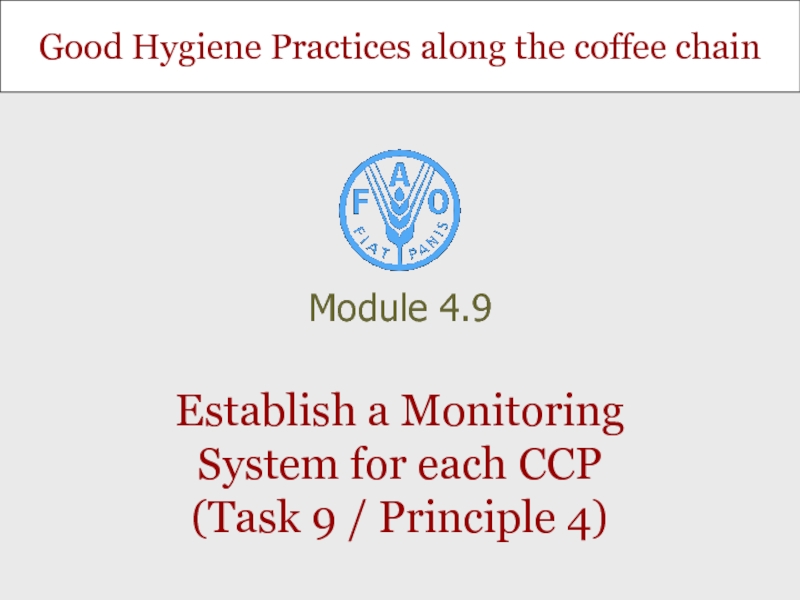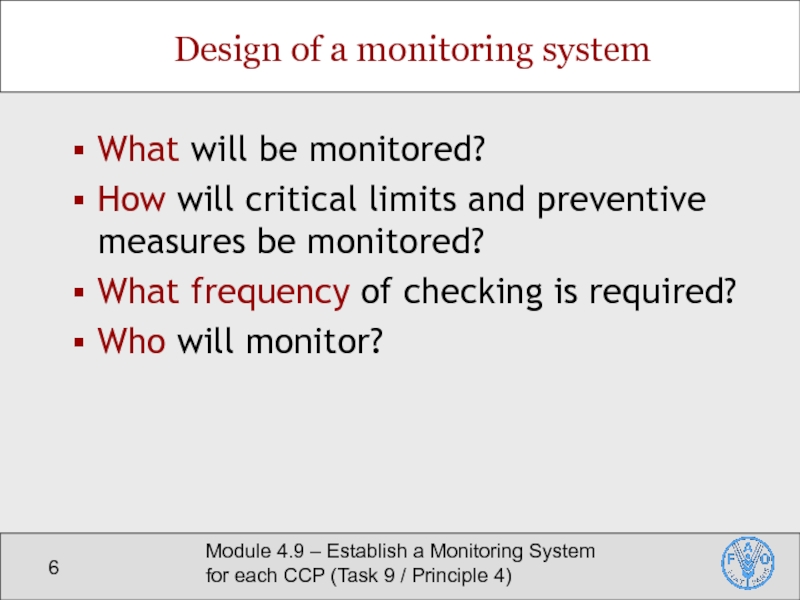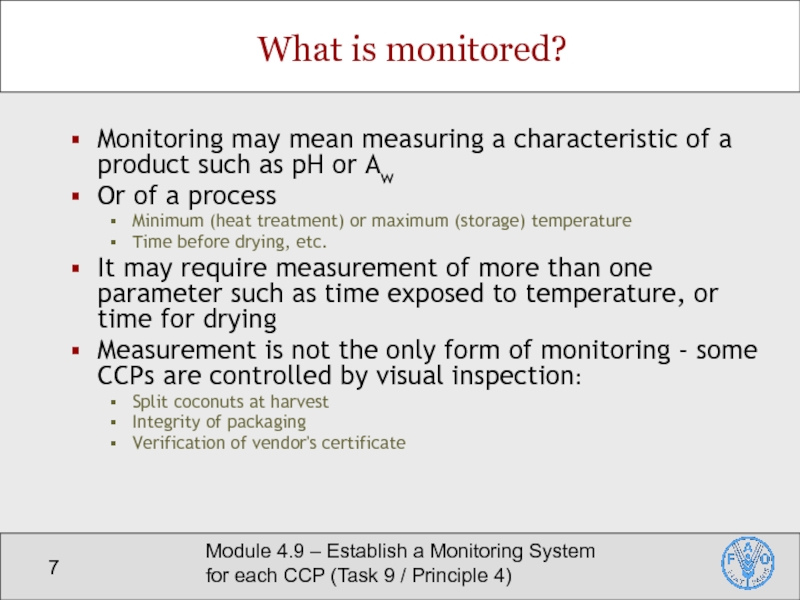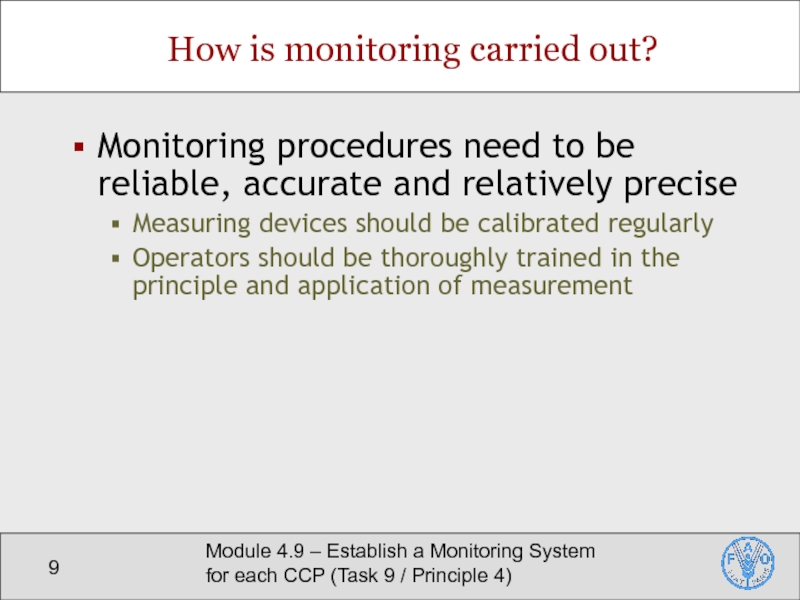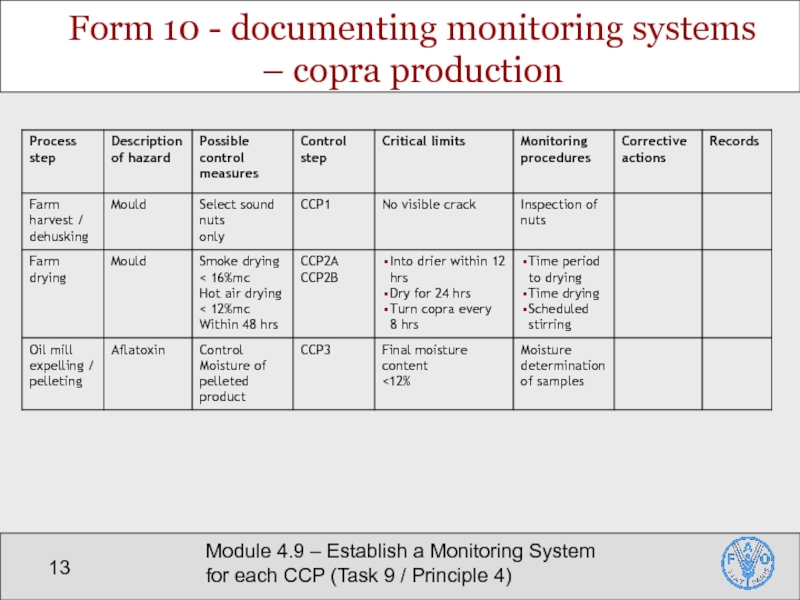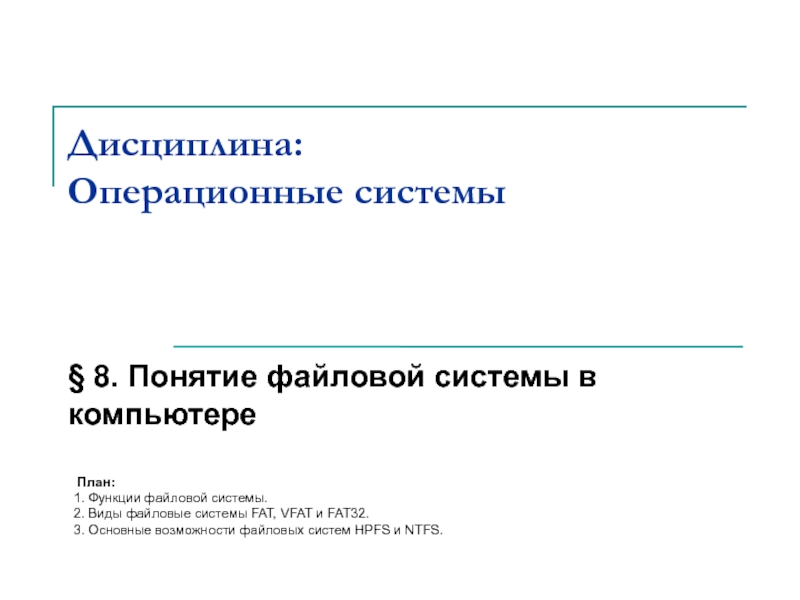- Главная
- Разное
- Дизайн
- Бизнес и предпринимательство
- Аналитика
- Образование
- Развлечения
- Красота и здоровье
- Финансы
- Государство
- Путешествия
- Спорт
- Недвижимость
- Армия
- Графика
- Культурология
- Еда и кулинария
- Лингвистика
- Английский язык
- Астрономия
- Алгебра
- Биология
- География
- Детские презентации
- Информатика
- История
- Литература
- Маркетинг
- Математика
- Медицина
- Менеджмент
- Музыка
- МХК
- Немецкий язык
- ОБЖ
- Обществознание
- Окружающий мир
- Педагогика
- Русский язык
- Технология
- Физика
- Философия
- Химия
- Шаблоны, картинки для презентаций
- Экология
- Экономика
- Юриспруденция
Good Hygiene Practices along the coffee chain презентация
Содержание
- 1. Good Hygiene Practices along the coffee chain
- 2. Module 4.9 – Establish a Monitoring System
- 3. Module 4.9 – Establish a Monitoring System
- 4. Module 4.9 – Establish a Monitoring System
- 5. Module 4.9 – Establish a Monitoring System
- 6. Module 4.9 – Establish a Monitoring System
- 7. Module 4.9 – Establish a Monitoring System
- 8. Module 4.9 – Establish a Monitoring System
- 9. Module 4.9 – Establish a Monitoring System
- 10. Module 4.9 – Establish a Monitoring System
- 11. Module 4.9 – Establish a Monitoring System
- 12. Module 4.9 – Establish a Monitoring System
- 13. Module 4.9 – Establish a Monitoring System
- 14. Module 4.9 – Establish a Monitoring System
Слайд 2Module 4.9 – Establish a Monitoring System for each CCP (Task
Objectives and contents
Objectives
To equip trainees with the necessary skills to establish monitoring systems in a HACCP plan
Contents
The ‘What’s’, ‘Why’s’ and ‘How’s’ of monitoring
Designing a monitoring system
Documentation of monitoring systems in a HACCP plan
Слайд 3Module 4.9 – Establish a Monitoring System for each CCP (Task
Monitoring
Effective monitoring ensures that critical limits for each CCP are not exceeded
Monitoring
The act of conducting a planned sequence of observations or measurements of control parameters to assess whether a CCP is under control
Слайд 4Module 4.9 – Establish a Monitoring System for each CCP (Task
Purposes of monitoring
Measurement of system performance at CCPs – performance trends
To determine when there is loss of control at CCP
To establish records of the system’s level of performance at the CCP – demonstration of compliance with the HACCP plan
Слайд 5Module 4.9 – Establish a Monitoring System for each CCP (Task
Characteristics of monitoring systems
Can be done continuously
Can be done on a batch basis
Required to give rapid results because process control requires real-time adjustments
Should be done with accurate devices
Bear in mind that the monitored parameter is often an indirect measurement of the control parameter – e.g. fill volume is monitored to assure adequate heat killing
Слайд 6Module 4.9 – Establish a Monitoring System for each CCP (Task
Design of a monitoring system
What will be monitored?
How will critical limits and preventive measures be monitored?
What frequency of checking is required?
Who will monitor?
Слайд 7Module 4.9 – Establish a Monitoring System for each CCP (Task
What is monitored?
Monitoring may mean measuring a characteristic of a product such as pH or Aw
Or of a process
Minimum (heat treatment) or maximum (storage) temperature
Time before drying, etc.
It may require measurement of more than one parameter such as time exposed to temperature, or time for drying
Measurement is not the only form of monitoring - some CCPs are controlled by visual inspection:
Split coconuts at harvest
Integrity of packaging
Verification of vendor's certificate
Слайд 8Module 4.9 – Establish a Monitoring System for each CCP (Task
How is monitoring carried out?
Monitoring procedures need to provide rapid results (real-time)
Instant (or almost instant) readings: clocks, thermometers, pressure gauges, pH meters
Rapid readings: Aw meters, chlorine colorimetry, ATP-based microbial load, redox colorimetry
Microbial or chromatographic analysis is rarely used for monitoring
Слайд 9Module 4.9 – Establish a Monitoring System for each CCP (Task
How is monitoring carried out?
Monitoring procedures need to be reliable, accurate and relatively precise
Measuring devices should be calibrated regularly
Operators should be thoroughly trained in the principle and application of measurement
Слайд 10Module 4.9 – Establish a Monitoring System for each CCP (Task
Frequency of monitoring
Continuous monitoring is preferred whenever possible
Necessary to review monitoring results at appropriate intervals
To determine the sampling frequency of non-continuous monitoring, consider
The normal variation in the process
Difference between critical and operating limits
Assessment of potential product loss during monitoring interval if there is loss of control
Слайд 11Module 4.9 – Establish a Monitoring System for each CCP (Task
Who monitors?
Any individual with a production or quality assurance function may be appropriate for assigning responsibility for monitoring
Individual responsible for monitoring must
Be adequately trained in the monitoring techniques and reporting responsibilities
Understand the importance of CCP monitoring
Have the authority to take appropriate action
Слайд 12Module 4.9 – Establish a Monitoring System for each CCP (Task
Form 10 - documenting monitoring
systems - example of boia
Слайд 13Module 4.9 – Establish a Monitoring System for each CCP (Task
Form 10 - documenting monitoring systems – copra production
Слайд 14Module 4.9 – Establish a Monitoring System for each CCP (Task
Summary
What is monitoring - and how and why is it carried out?
Considerations in designing a monitoring system
Documentation of monitoring systems in a HACCP plan
